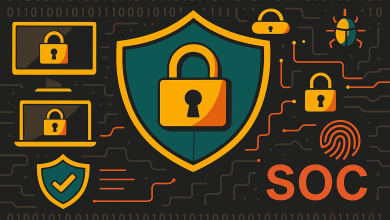
In an era where digital threats are evolving at an unprecedented pace, the cybersecurity industry faces challenges that go beyond technological solutions. Recent studies have shed light on a startling reality: human error is at the heart of an overwhelming majority of data breaches. According to IBM research, a staggering 95% of data breaches can be attributed to human factors.
The Human Element in Cybersecurity
Despite significant investments in advanced security technologies and increased cybersecurity budgets over the past decade, organisations continue to grapple with breaches stemming from human error. This persistent issue underscores the critical need for a paradigm shift in how we approach cybersecurity.
Understanding the Scope of the Problem
The Verizon 2024 Data Breach Investigations Report (DBIR) further emphasises this point, revealing that 68% of all breaches in 2023 involved a non-malicious human element. This statistic is particularly concerning given the widespread implementation of cybersecurity awareness training in organisations worldwide
The Rise of Human Risk Management (HRM)
Recognising that traditional approaches to cybersecurity training may not be sufficient, the industry is witnessing the emergence of Human Risk Management (HRM) as a crucial discipline. HRM acknowledges the inevitability of human error but takes a proactive stance by:
- Identifying individual employee risk profiles
- Enabling targeted interventions
- Focusing on risk mitigation rather than elimination
SanRa: Pioneering Human Factors in Cybersecurity
In this landscape, SanRa stands out as a beacon of innovation and expertise. As the world’s only company focusing exclusively on human factors in cybersecurity, SanRa is uniquely positioned to address the most pressing challenges facing organisations today.
Key Differentiators
- CREST Approved: SanRa’s certification by CREST, a globally recognised accreditation body underscores its commitment to excellence and adherence to rigorous industry standards.
- Specialised Focus: By concentrating solely on human factors, SanRa offers unparalleled expertise in an area that has been identified as the most significant vulnerability in cybersecurity defences.
- Collaborative Partnerships: SanRa’s work with the UK Cyber Team and SANS Institute demonstrates its role at the forefront of cybersecurity education and talent development.
The Path Forward
As the cybersecurity landscape continues to evolve, addressing human factors will be crucial for building robust defence strategies. Organisations must look beyond traditional security measures and invest in comprehensive human-centric approaches to truly safeguard their digital assets
Key Considerations:
- Tailored Training Programs: Develop cybersecurity awareness initiatives that address specific human risk factors identified within your organization.
- Continuous Assessment: Implement ongoing evaluation of employee cybersecurity practices to identify areas for improvement and measure the effectiveness of training program
- Cultural Shift: Foster a culture of security awareness where every employee understands their role in protecting organisational assets.
- Leveraging Expertise: Partner with specialised firms like SanRa to gain insights into best practices for managing human factors in cybersecurity.
In conclusion, as we navigate the complex cybersecurity challenges of 2024 and beyond, organisations must recognise that their strongest defence lies not just in technology, but in empowering and educating their workforce. By focusing on the human element, companies can significantly reduce their vulnerability to cyber threats and build a more resilient security posture.



